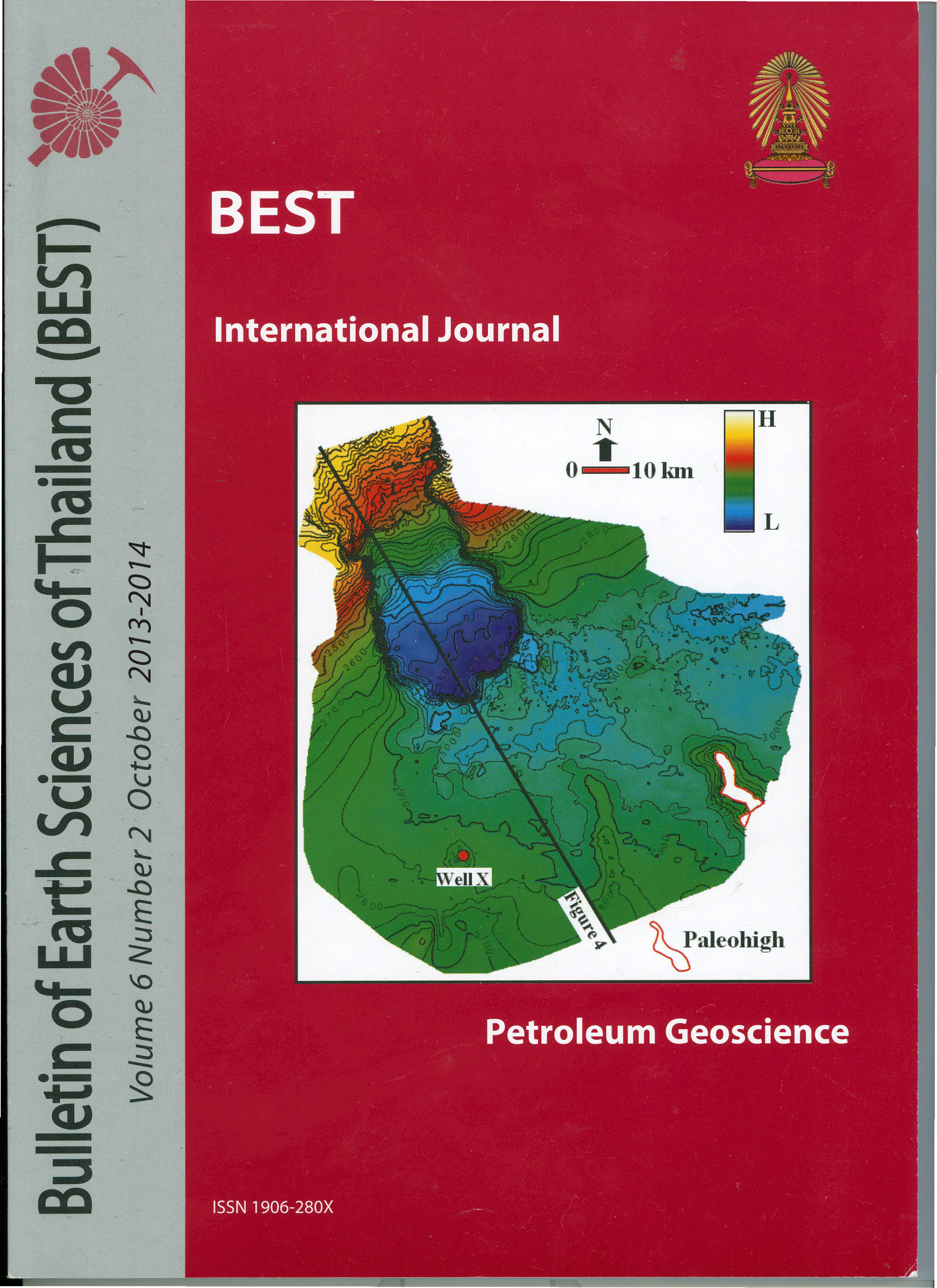Sand Body Architecture and Seismic Facies Analysis in Nong Yao Area, Pattani Basin, Gulf of Thailand
Main Article Content
Abstract
Analogues of fluvial channel systems were built for a better understanding of sand distribution and reservoir complexity, especially in isolated Early to Middle Miocene sand bodies, in the Nong Yao area on the south-east flank of the Pattani Basin in the Gulf of Thailand. Stratal slicing illustrated the complexity of the amalgamated and isolated fluvial systems where five channel styles were identified, including (1) large channel meander belts, (2) high-sinuosity large channels with large point bars, (3) low-sinuosity small channels with narrow point bars, (4) incised-channel fills and (5) tidal creeks. The best reservoir potential in the study area is in large channel meander belt systems which have high volumes and good connectivity, porosity and permeability. High-sinuosity large channels with large point bars are a secondary reservoir target while low-sinuosity small channels associated with narrow point bars have the smallest volumes and limited connectivity.
Article Details

This work is licensed under a Creative Commons Attribution-NonCommercial-NoDerivatives 4.0 International License.
Copyright © 2008 Department of Geology, Faculty of Science, Chulalongkorn University. Parts of an article can be photocopied or reproduced without prior written permission from the author(s), but due acknowledgments should be stated or cited accordingly.
References
Miall, A.D. 2002. Architecture and sequence stratigraphy of Pleistocene fluvial systems in the Malay Basin, based on seismic time-slice analysis: AAPG Bulletin, v. 86, no.7, p. 1201-1216.
Reijenstein, H.M., Posamentier, H.W., and Bhattacharya, J.P. 2011. Seismic geomorphology and highresolution seismic stratigraphy of inner-shelf fluvial, estuarine, deltaic, and marine sequences, Gulf of Thailand: AAPG Bulletin, v. 95, no.7, p. 1959-1990.


